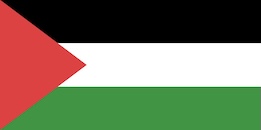The Scent of Love - The Scent of Death
by Nicholas Hall
Prologue
Copyright© 2016 – Nicholas Hall
This is a work of fiction. Names, characters, places, and incidents either are the product of the author's imagination or are used fictitiously. Any resemblance to actual persons, living or dead, or locales is entirely coincidental or used in a fictional content.
The Literary works of Nicholas Hall are protected by the copyright laws of the United States of America and are the property of the author.
If you enjoy my stories and the many others found on this free site, please consider a donation. It is your donations which make all of our stories free and available for you to read and enjoy.
Thank you.
Nick Hall
"We simply need that wild country available to us even if we never do more than drive to its edge and look in. – For it can be a means of reassuring ourselves of our sanity as creatures, part of the geography of hope."
(Wallace Stegner)
Border – an outer part or edge
Boundary – something that indicates or fixes a limit or extent
(Merriam-Webster Collegiate Dictionary – Eleventh Edition)
National boundaries or borders are drawn between sovereign countries or states, not for the most logical reasons, but for reasons of a political nature or physical conquest. Some of those borders, and one would venture most, have a definitive, limiting barrier such as a fence, wall, river or some other obstacle regulating or limiting access or egress by humans from the country without some sort of permission from authorities, a passport, or visa.
The Canadian/United States Border is reputed to be five thousand sixty-one kilometers or three thousand forty-five miles in length on land and three thousand thirty kilometers or two thousand three hundred eighty miles on water. This border, often marked only by a cleared strip of land and/or metal, stone, or concrete markers, traverses through mountains, valleys, follows rivers, across plains, through lakes, forests, and municipalities with little more than custom agents or border crossing agents to patrol and monitor it. The few fenced portions generally are in the populated areas or at major road or railroad crossings where passports are required to enter or leave. There are those exceptions where ports of entry are located on lake shores where boats and passengers are checked. In all cases, passports are required to cross the international border.
The unfenced, but marked sections of the border are lightly patrolled, but patrolled they are! The agents from both countries are very cognizant of most of what transpires in their patrol areas. Yet, there are instances of border crossings which go undetected!
Along the five hundred forty-seven mile Minnesota segment of the Canadian/United States Border there exists some of the finest pristine lakes and forested wilderness one could hope to find in the upper Midwest and accessible to the public through national parks and forests and state parks and forests; the Northwest Angle State Forest, the Lost River State Forest, Voyageur National Park, Superior National Forest, The Boundary Waters Canoe Area, the Grand Portage State Forest, and the Kabetogama State Forest. These areas are visited by campers, canoeists, boaters, sight-seers, and those who spend time at resorts, motels, and others who just plain drive in to experience the wilderness.
Human traffic is monitored, as best possible, at ports of entry by custom agents as well as regular patrols along the border by agents, but there are just so many agents and so, so, much territory to cover. There are those other creatures, other than humans, the wild, natural creatures which inhabit the forests, crossing the International Border with relative ease, with little hindrance, without a second glance from those assigned to patrol and guard the border. There might be moose, deer, coyotes, bobcats, otter, bears, and many other of nature's critters – including wolves!
Authors deserve your feedback. It's the only payment they get. If you go to the top of the page you will find the author's name. Click that and you can email the author easily.* Please take a few moments, if you liked the story, to say so.
[For those who use webmail, or whose regular email client opens when they want to use webmail instead: Please right click the author's name. A menu will open in which you can copy the email address (it goes directly to your clipboard without having the courtesy of mentioning that to you) to paste into your webmail system (Hotmail, Gmail, Yahoo etc). Each browser is subtly different, each Webmail system is different, or we'd give fuller instructions here. We trust you to know how to use your own system. Note: If the email address pastes or arrives with %40 in the middle, replace that weird set of characters with an @ sign.]
* Some browsers may require a right click instead


